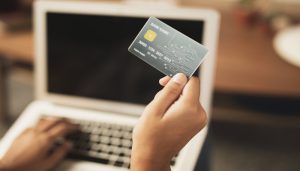The demand for Loans for Clean Energy is growing rapidly in South Africa as more individuals and businesses seek sustainable solutions.
With rising electricity costs and frequent power outages, renewable energy is becoming an attractive alternative.
However, the upfront costs of solar panels, wind turbines, and other clean energy systems can be high. That’s where Loans for Clean Energy play a crucial role in financing a greener future.
Why Invest in Clean Energy?
South Africa has abundant solar and wind resources, making it an ideal location for clean energy investments. Switching to renewable energy offers several benefits, including:
- Lower electricity bills – Solar and wind power reduce dependence on the national grid, helping homeowners and businesses save money over time. With energy prices in South Africa constantly rising, investing in renewables offers a long-term cost-effective solution.
- Energy security – The country experiences frequent load shedding due to instability in the national power supply. Clean energy solutions like solar panels and battery storage help ensure a consistent and reliable electricity source, reducing disruptions in daily life and business operations.
- Environmental impact – Fossil fuel-based electricity generation contributes significantly to carbon emissions. Investing in renewables helps reduce South Africa’s carbon footprint and contributes to global efforts to combat climate change.
- Long-term savings – Although the initial investment in clean energy technology can be significant, the long-term savings outweigh the costs. Once the system is installed, maintenance costs are minimal compared to paying for electricity from the grid.
- Increased property value – Homes and businesses equipped with solar panels and energy-efficient systems often have higher resale values. Buyers are increasingly looking for properties that offer energy-saving solutions.
Understanding Loans for Clean Energy
Many financial institutions in South Africa offer Loans for Clean Energy to support individuals and businesses in transitioning to renewable energy. These loans are designed to cover the costs of solar panels, battery storage, wind turbines, and other sustainable energy solutions.
How Do These Loans Work?
Loans for Clean Energy typically function like other types of financing, with specific terms and interest rates. Borrowers receive funds to purchase and install clean energy systems and repay the loan in monthly installments. Some loans come with flexible repayment options and lower interest rates to encourage sustainable investments.
Many lenders offer secured and unsecured Loans for Clean Energy. Secured loans usually have lower interest rates since they are backed by collateral, such as a property or other valuable assets. Unsecured loans, on the other hand, do not require collateral but often come with slightly higher interest rates.
Some government-backed programs and green financing initiatives offer additional incentives, such as tax benefits or interest rate subsidies, making it even more attractive to invest in renewable energy solutions.
Types of Loans for Clean Energy
There are different types of financing options available in South Africa, tailored to the needs of individuals and businesses. Some of the most common include:
- Personal Loans for Clean Energy – These are ideal for homeowners who want to install solar panels, energy-efficient appliances, or other clean energy systems. They are usually unsecured and have flexible repayment terms.
- Green Home Loans – Some banks offer mortgage-linked financing for energy-efficient home upgrades, allowing borrowers to incorporate the cost of renewable energy systems into their home loan repayments.
- Business Loans for Clean Energy – Companies looking to reduce operational costs and achieve sustainability goals can apply for loans to fund large-scale renewable energy projects, such as solar farms or wind turbines.
- Government and Subsidized Loans – Some programs offer low-interest or subsidized financing for clean energy initiatives. These loans are often part of broader efforts to promote green energy adoption and sustainability.
- Equipment Financing – Designed for businesses and industries that need to acquire clean energy technology, such as solar panels, inverters, and battery storage, without paying the full amount upfront.
Best Banks and Institutions Offering Loans for Clean Energy in South Africa
Several financial institutions provide financing for renewable energy investments. Some of the top options include:
- Nedbank Green Home Loan – Offers special financing for homeowners investing in clean energy, making it easier to afford solar panels and energy-efficient home improvements.
- FNB Solar Financing – Provides personal loans specifically for solar panel installations, helping individuals reduce reliance on the national grid.
- Standard Bank Sustainable Finance – Supports both individuals and businesses with Loans for Clean Energy, making renewable energy investments more accessible.
- Development Bank of Southern Africa (DBSA) – Funds large-scale renewable energy projects, particularly for businesses and industries looking to transition to sustainable power solutions.
- ABSA Green Energy Loan – Offers financing options with competitive interest rates for individuals and businesses investing in clean energy technologies.
Key Factors to Consider Before Applying
Before applying for Loans for Clean Energy, consider the following:
- Loan terms – Check the repayment period, interest rates, and any additional fees associated with the loan. Opt for terms that suit your financial situation.
- Eligibility requirements – Some lenders may require proof of income, credit history, or property ownership to qualify for financing.
- Return on Investment (ROI) – Calculate long-term savings versus loan repayment costs. Ensure that the reduction in electricity bills justifies the loan.
- Installation and maintenance – Choose reliable suppliers and certified installers to avoid potential issues with system performance and warranty claims.
- Government incentives – Check for any available subsidies, tax benefits, or rebates that could make clean energy investments more affordable.
- Insurance and warranties – Make sure your clean energy system is covered against damage or failure, ensuring long-term value from your investment.
How to Apply for Loans for Clean Energy
Applying for a Loan for Clean Energy is a straightforward process. Here are the steps to follow:
- Assess Your Needs – Determine the type and scale of clean energy system you need.
- Compare Lenders – Research different banks and financial institutions offering Loans for Clean Energy to find the best interest rates and terms.
- Gather Required Documents – Prepare necessary paperwork, including proof of income, credit history, and installation quotes from certified providers.
- Submit Your Application – Apply online or visit a branch to complete your loan application.
- Approval and Disbursement – Once approved, funds are disbursed, and installation can begin.
The Future of Clean Energy in South Africa
With the increasing adoption of renewable energy, the demand for Loans for Clean Energy is expected to rise. Government incentives and technological advancements will make clean energy more accessible and affordable. Investing in solar, wind, and battery storage today ensures long-term benefits for both individuals and businesses.
South Africa’s commitment to reducing its reliance on fossil fuels aligns with global sustainability goals. The rise of independent power producers (IPPs) and initiatives supporting clean energy growth indicate a promising future for the renewable energy sector.
By securing Loans for Clean Energy, South Africans can take control of their energy future, reduce costs, and contribute to a more sustainable environment. Now is the time to make the switch to clean energy and invest in a brighter, greener tomorrow.





